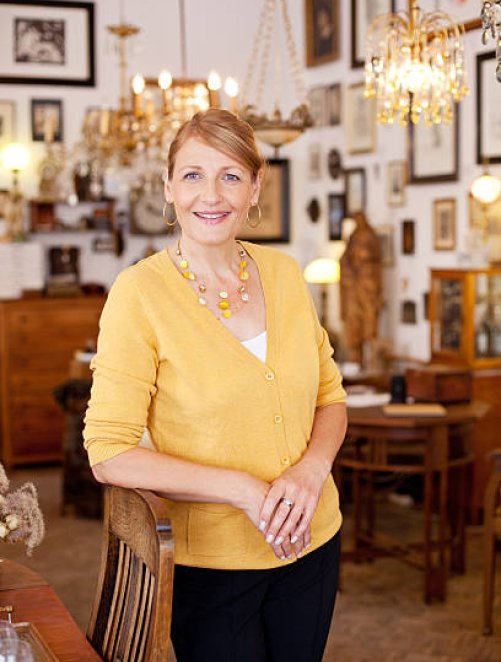








Miniature Portrait Summary for Appraisal
Miniature Portrait Summary for Appraisal Overview: We are seeking an expert evaluation of a highly detailed 19th-century miniature portrait of a young male, set in a 24-karat gold frame, adorned with distinctive heraldic and military symbolism. This piece is suspected to have ties to the Napoleonic or early post-Napoleonic era based on uniform details, medals, and the prominent eagle motif. Physical Description: 1. Portrait Details: • Medium: Miniature portrait painted on a material resembling ivory or porcelain. • Depiction: A young man in a white military-style uniform with a green collar, adorned with medals, gold embellishments, and a ceremonial sash. 2. Frame Details: • Material: Acid-tested 24-karat gold. • Design: Features a prominent single-headed eagle at the crest (potentially French Imperial or Habsburg symbolism), along with laurel and floral wreaths. • Backing: Lined with decorative fabric and a support stand. 3. Signatures: • Front: Signed “De backward lowercase r Val” (interpreted as “Derval” or similar). • Back: Another signature, “L. Cligfon” (or potentially “L. Clignon” or “Clifton”), appears on the reverse. Key Assumptions and Historical Context: 1. Time Period: • Likely created between 1800 and 1840, based on the uniform, medals, and artistic style. 2. Medals and Honors: • The sitter prominently wears two identifiable medals: • Legion of Honour (France): Established by Napoleon Bonaparte in 1802, this is France’s highest order of merit for military or civil service. • Order of Leopold (Belgium): Established in 1832, this is Belgium’s highest honor, awarded for extraordinary contributions to the nation. • The combination of these honors strongly suggests a figure of significant merit tied to France and Belgium. 3. Uniform: • The white military uniform with a green collar suggests affiliation with an elite French regiment or diplomatic corps. • Collar colors in French military uniforms were used to denote rank or regiment. 4. Eagle Motif: • The single-headed eagle suggests ties to Napoleon’s France (Aigle de drapeau), a symbol of imperial strength and authority. • Alternatively, if interpreted as Habsburg, the double-headed eagle (not apparent here) would signify Austro-Hungarian connections. Possible Identifications: 1. Charles-Joseph, Comte de Flahaut (1785–1870): • French general and diplomat under Napoleon, known for ties to Belgium and a recipient of the Grand Cross of the Legion of Honour. • A plausible candidate given his age during the Napoleonic era and the timing of the portrait. 2. Prince Eugène de Beauharnais (1781–1824): • Napoleon’s stepson and Viceroy of Italy, recipient of the Legion of Honour, and connected to the broader European nobility. 3. Jean-Baptiste Drouet, Comte d’Erlon (1765–1844): • French general active during the Napoleonic Wars, honored with the Grand Cross of the Legion of Honour, though his age might not align with the youthful sitter. 4. Unnamed Belgian or French Noble/Military Figure: • Potentially a younger officer or diplomat with ties to both France and Belgium, whose identity has yet to be documented. Investments and Current Understanding: 1. Authentication Efforts: • The frame has been acid-tested and confirmed to be 24-karat gold. • The signatures have been analyzed and interpreted, though not definitively identified. 2. Historical Research: • The sitter’s identity has been narrowed based on military and diplomatic connections to France and Belgium, alongside the Legion of Honour and Order of Leopold awards. 3. Assumptions: • The identification of Charles-Joseph, Comte de Flahaut, is based on overlapping historical clues and statistical probability, but it is not confirmed. • The eagle is most likely the French Imperial Eagle based on design and symbolism. Questions for Appraisers: 1. Can the artist be definitively identified? • The front signature reads “De backward lowercase r Val,” possibly “Derval,” while the reverse is signed “L. Cligfon.” Could these names be tied to a documented artist or sitter? 2. Can the sitter be confirmed? • Based on the medals, uniform, and style, is there evidence to definitively identify the young man depicted in this miniature? 3. Can you verify the heraldry of the eagle? • Is this eagle French Imperial (Napoleon’s reign) or Habsburg? 4. Estimated Value: • Considering the historical context, materials, and craftsmanship, what would you estimate as the current market value? Additional Notes: This piece was acquired as part of a broader historical collection and is intended for preservation or potential sale, contingent upon proper authentication.
Approximately 5“ x 2 1/2“
Inherited
Yes


Hello,
This appraisal evaluates a finely detailed 19th-century miniature portrait of a young male subject, framed in a 24-karat gold case and adorned with distinctive heraldic and military motifs. Based on the imagery and symbolism present, the piece appears to have connections to the Napoleonic or post-Napoleonic era, likely between 1800 and 1840.
Physical Description:
1. Portrait Details:
• Medium: Miniature painting executed on a material resembling ivory or porcelain, characterized by its smooth texture and fine detailing.
• Subject: A youthful male in a white military-style uniform with green collar accents, embellished with medals and a ceremonial sash. The sitter’s expression is poised, and his red hair is meticulously rendered.
• Signature: Signed in the lower right corner with “Derval,” which may refer to the artist.
2. Frame Details:
• Material: Acid-tested 24-karat gold.
• Design: The frame is richly decorated with a single-headed eagle crest (possibly French Imperial), floral wreath motifs, and laurel decorations. The reverse side is lined with decorative fabric and features an ornate support stand.
3. Dimensions:
• Approximately 5 x 2.5 inches.
Historical Context:
• Medals: The sitter is depicted wearing the Legion of Honour (France) and the Order of Leopold (Belgium), prestigious decorations established in 1802 and 1832, respectively. These awards suggest that the sitter held significant military or diplomatic status in France and Belgium.
• Eagle Symbolism: The single-headed eagle emblem aligns with the French Imperial Eagle motif, symbolizing Napoleon’s regime and its imperial strength.
• Uniform: The green collar and white uniform point to a high-ranking individual in the French military or diplomatic corps. Such collars denoted regiment or rank in military uniforms of this period.
Possible Identifications:
1. Charles-Joseph, Comte de Flahaut (1785–1870): A French general and diplomat under Napoleon, closely tied to France and Belgium.
2. Prince Eugène de Beauharnais (1781–1824): Napoleon’s stepson and a decorated military figure.
3. Jean-Baptiste Drouet, Comte d’Erlon (1765–1844): A prominent general in the Napoleonic Wars.
These identifications are based on historical clues, yet further research is necessary for confirmation.
Condition:
The miniature and its frame are in excellent condition, with no visible damage to the painting or gold casing. The backing fabric shows minor signs of age.







